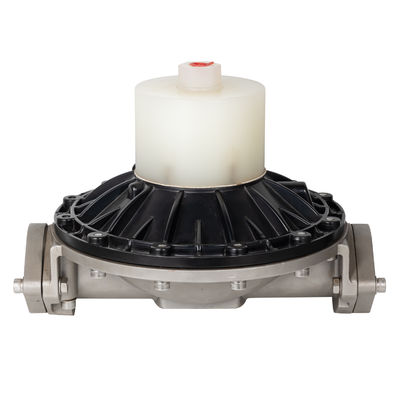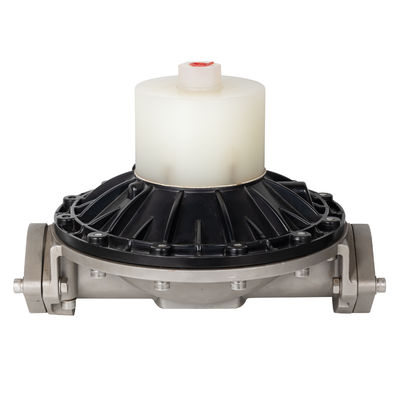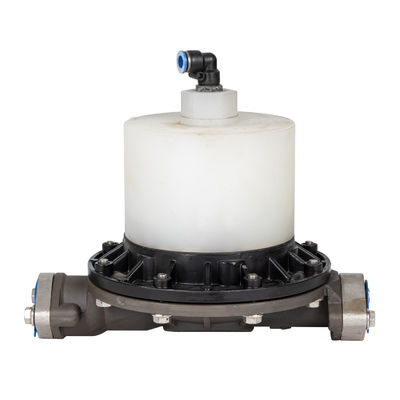The Unsung Hero: The Critical Role of the Buffer Tank in Diaphragm Pump Systems
In the world of industrial fluid handling, diaphragm pumps are renowned for their robustness, versatility, and ability to handle a wide range of fluids, from viscous sludges to corrosive chemicals. However, even the most reliable workhorse can benefit from a supporting component that enhances its performance and longevity. This component is the buffer tank (or pulsation damper), an often-overlooked but critically important accessory.
This article explores the function, benefits, and key considerations of installing a buffer tank in a diaphragm pump system.
Understanding the Core Challenge: Pulsation
Unlike centrifugal pumps that provide a smooth, continuous flow, diaphragm pumps operate on a reciprocating principle. The back-and-forth motion of the diaphragm creates discrete volumes of fluid that are pushed through the discharge line. This results in a pulsed, or pulsating, flow.
While this pulsation is inherent to the pump's design, it can cause several significant issues in a piping system:
-
Water Hammer: The rapid acceleration and deceleration of the fluid column can create destructive pressure spikes, known as water hammer. This can stress pipes, fittings, valves, and instruments, leading to fatigue failures and leaks.
-
Vibration: Pulsation transmits vibration throughout the entire system. This can loosen connections, cause excessive wear on supports, and create noise.
-
Inaccurate Flow Metering: Many flow meters, such as turbine or magnetic flow meters, are calibrated for steady flow. Pulsation can cause them to read inaccurately, leading to process control errors and dosing inaccuracies.
-
Reduced Pump Efficiency: The pump has to work against its own created pressure waves, consuming more energy than necessary.
The Solution: How a Buffer Tank Works
A buffer tank is a vessel installed on the discharge side of the diaphragm pump, designed to mitigate these pulsations. It functions based on a simple yet effective principle: using a compressible gas cushion to absorb energy.
A typical bladder-type buffer tank contains two main components:
-
A Flexible Bladder or Diaphragm: This separates the pumped fluid from a gas chamber.
-
A Gas Charge (usually Nitrogen or Air): The gas side is pre-charged to a specific pressure, typically set to 60-80% of the system's average operating pressure.
Here's the process during operation:
-
During the Pump's Discharge Stroke: The pump pushes a slug of fluid into the discharge line at high pressure. Instead of this entire pressure wave traveling down the pipe, it compresses the gas in the buffer tank. The bladder expands, absorbing the peak of the pressure pulse and storing its energy.
-
Between Discharge Strokes: As the pump cycles to its suction stroke, the pressure in the line momentarily drops. The compressed gas in the buffer tank now expands, pushing the stored fluid back into the line.
This continuous cycle of energy absorption and release effectively "smoothes" the sharp pressure peaks and troughs into a much more laminar and consistent flow.
Key Benefits of Installing a Buffer Tank
The integration of a buffer tank delivers tangible improvements across the entire system:
-
Extended Equipment Life: By eliminating damaging pressure spikes and reducing vibration, the service life of the pump itself, as well as valves, gauges, and downstream equipment, is significantly prolonged.
-
Smoother Flow: The process benefits from a more consistent flow rate, which is crucial for applications like chemical dosing, chromatography, or any process requiring precise volumetric control.
-
Reduced Noise and Vibration: The system operates more quietly and with markedly less shaking, contributing to a safer and more comfortable working environment.
-
Improved Pump Efficiency: The pump operates against a more stable back-pressure, which can reduce energy consumption and mechanical stress on the pump's drive train.
-
Enhanced Accuracy of Instruments: Flow meters and pressure sensors provide more reliable and accurate readings, leading to better process control and data integrity.
Selecting and Sizing a Buffer Tank
Choosing the right buffer tank is crucial for optimal performance. Key factors include:
-
Pump Flow Rate (GPM/LPM): Higher flow rates require a larger tank capacity to effectively dampen the pulses.
-
Pump Speed (RPM/SPM): The number of pulses per minute affects the required damping efficiency.
-
System Operating Pressure: The tank must be rated for the maximum system pressure.
-
Acceptable Residual Pulsation: The desired level of flow smoothness will determine the final size. In critical applications, larger tanks or multiple tanks may be necessary.
Manufacturers often provide formulas or sizing software to help select the correct buffer tank volume based on these parameters.
Conclusion
While a diaphragm pump can function without a buffer tank, operating it without one is akin to driving a car without shock absorbers. The ride will be rough, components will wear out faster, and control will be compromised. The buffer tank is a simple, cost-effective investment that pays for itself many times over by protecting capital equipment, ensuring process stability, and reducing maintenance downtime. It transforms a inherently pulsed pump into a smooth, reliable, and efficient fluid handling solution, truly earning its title as the unsung hero of the diaphragm pump system.

 Your message must be between 20-3,000 characters!
Your message must be between 20-3,000 characters! Please check your E-mail!
Please check your E-mail!  Your message must be between 20-3,000 characters!
Your message must be between 20-3,000 characters! Please check your E-mail!
Please check your E-mail! 




